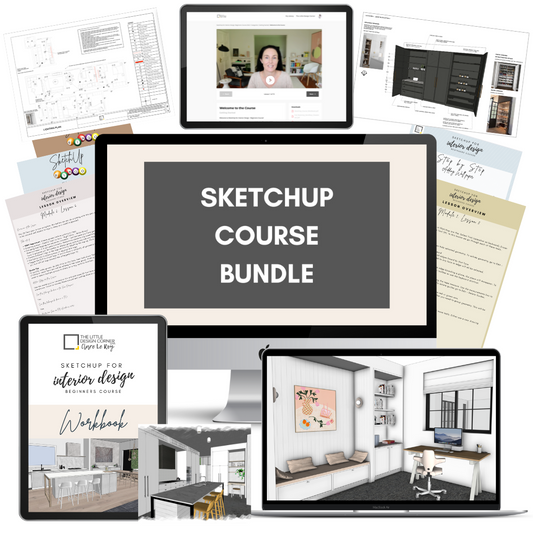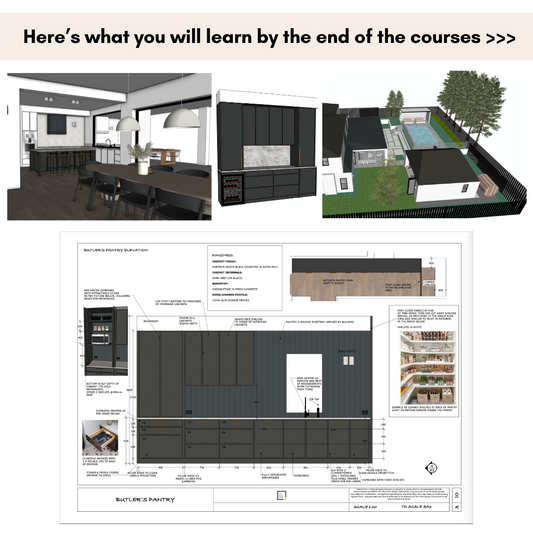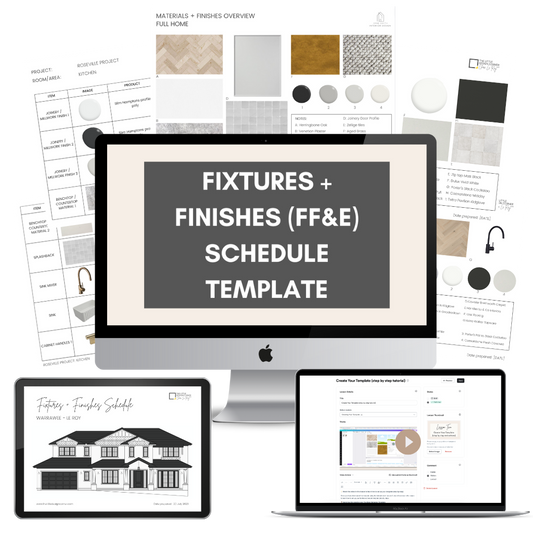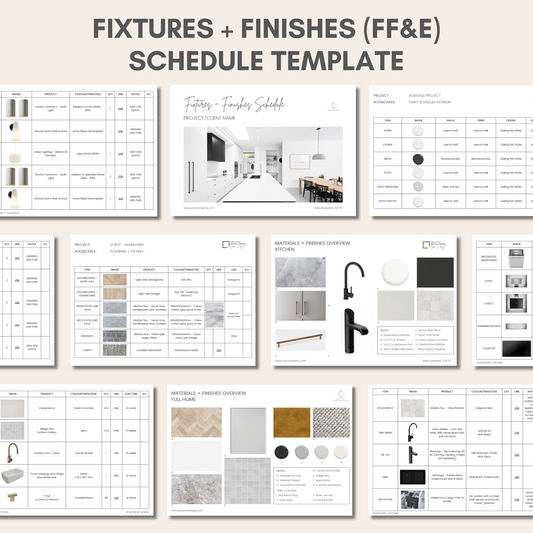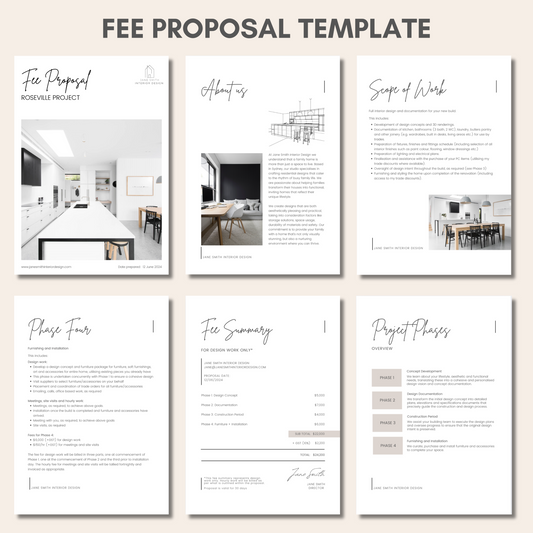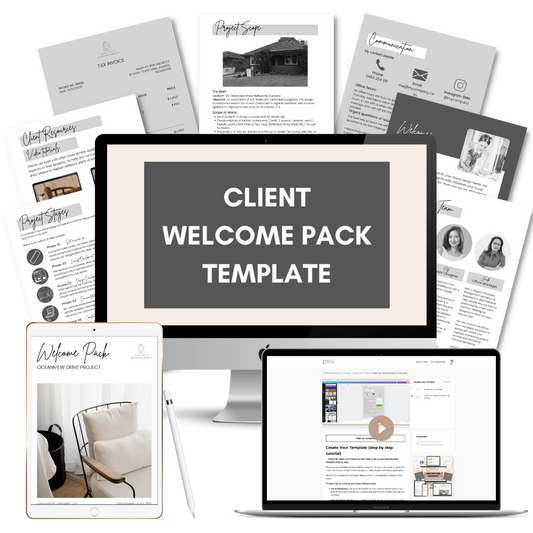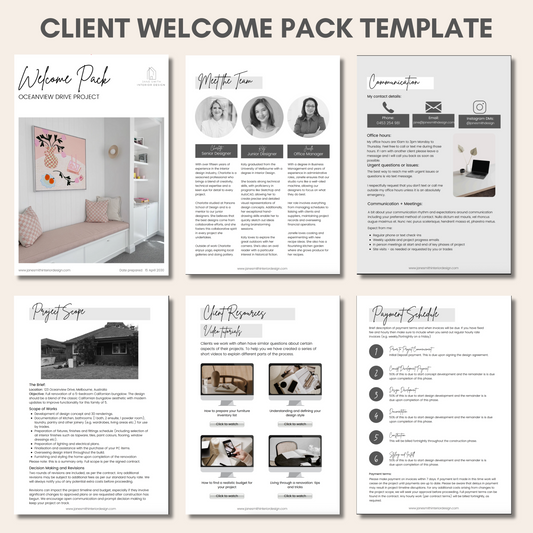You’ve come to the end of your latest interior design project and it’s time for installation day.
This can be an exciting process as it’s time to see your vision come to life, but it can also be stressful if you're not properly prepared.
So in this post I share some tips and a checklist to help you plan and execute a successful installation day. ✅
Tip 1: Plan Ahead
Make sure you have all of your materials and supplies ready to go.
Here’s a few things to plan and prepare before installation day:
-
Keep a spreadsheet (I would use Notion) to track inventory for installation and make sure you have everything you need
-
Order/pack/prepare all your styling and accessories needed for installation, if this is part of your service
-
Pack all styling and accessories in bubble wrap and organise these by room. I pack each into boxes per room that are well labelled, this will save you a lot of time on the day.
-
Wash linen and crockery (if you are offering full service like this)
-
Order flowers for pick up or delivery
-
Order or purchase gifts for clients (e.g. chocolates, champagne, cheese board - whatever you will leave to make the house feel like a 'home' when they get back)
-
Print off floor plans with main furniture pieces on them (stick to each door when you arrive to make the move in process easy and quick - see note below about this)
I always had an ‘installation box’ that I kept ready to go in my storeroom with the basics of what I would take to each installation.
In this box I would normally have:
-
phone charger
-
speaker (for music on the day!)
-
iron/steamer
-
scissors (more than one pair as often more than one person needs them at a time)
-
hammer
-
battery operated screw driver (fully charged, with spare batteries)
-
3M wall hooks
-
painters’ tape (good for marking out rug or art placement)
-
stud finder
-
laser measure
-
tape measure
-
level
-
hand vacuum
-
zip ties (for electrical cord organisation)
-
mop/floor cloth
-
disposable wipes
-
hand soap
-
hand towel
-
paper towel
-
disposable gloves
-
cleaning products including glass cleaner
-
felt furniture pads
-
batteries
-
power boards
-
extension cords in various sizes
-
rubbish bags
-
plastic drop clothes
-
nails/screws/tool set
-
goo remover (great for price sticker removal!)
-
snacks/drinks
-
water bottle
-
first aid kit
-
walkie talkies can be helpful for large teams in large houses
Before the day double and triple check your box to see if you need to restock any items! It can be SO annoying to not have something you need on installation day and really slow your progress if you have to go back to the office (or store) to get it.
Keep a list of what you use on the day and charge this back to clients (or have this included as a general expense as part of your initial fee, which is definitely a better client experience).
Also consider creating individual room plans that you can have in each room to make furniture placement as quick and easy as possible. Often the movers will work faster than you, or you won’t be able to be in every room as they unload the truck, so if you’ve got a floor plan for each room laid out it will help an assistant know where everything to go OR the mover can also normally work it out themselves that way.
Tip 2: Book install day with partners
You’ll likely need help from specialists on install day.
Here’s some to consider booking and confirming dates with:
-
your warehouse (if you use one) - they can then make sure all items are ready and loaded onto the truck for delivery day
-
builder/trades (all construction should be completed before install day so make sure they know the date! You may also like someone there on install day in case any defects can be quickly repaired on the spot)
-
cleaner (make sure the cleaner has been through before install day - this is generally up to the builder to organise, but not always)
-
clients - if they are living in the home make sure they go out for the day. Having clients hovering around on install day is generally unproductive and will make the process take much longer for you - see a further note on this below
-
truck/van/movers
-
stylists/install team (see my note below about this)
-
photographer (it’s good to try to photograph the day of (or day after) install if you can, while the house is looking perfect!)
-
handyman (if needed for picture hanging, shelf hanging etc.)
-
fine art installer if artworks are expensive and a handyman shouldn’t install
-
window dressing installer (if this will be happening on install day)
Tip 3: Recruit help
If you’ve got staff in your business you’ll want to make sure their calendar is blocked out for installation day. This isn’t something you want to be doing on your own (trust me, I did a few by myself and they were HARD!!!).
If you don’t have staff in your business then see if a friend or family member could help you or even offer to pay them to help you. Depending on the size of the home you’re installing, having additional help is going to be a lifesaver when it comes to installation day (plus make it more fun as well!)
Tip 4: Make a schedule
Determine a timeline for the installation process, including breaks for lunch and other necessary rest periods. This will help keep things on track and ensure that the installation is completed in a timely manner.
Making a schedule will become easier as you do more installs (you may find it hard to know how long things take when you’re first getting started). So if you’re new to installing then I would suggest you loosely track your time during your first few installs so you know approximately how long it all takes (hint: it generally takes longer than you think it will!).
Also decide if the install will all happen in one day (often possible for smaller projects) or if you will need to spread it over a few days (generally the case for larger projects). Installing can be quite exhausting so make the timeline realistic. If you are working on a higher end or larger project that will have a multi-day install (and clients are living in the home) then book clients a hotel room for the night and include this in your initial fee. This can be a nice touch for them, plus gets them out of your hair for install!
Tip 5: Stay organised on the day
Keep your materials and tools organised, in one designated spot and easy to access throughout the install. It can be easy to lose things on installation day or leave them in a room and forget where you put something. I generally kept the most used items in a small box that I would carry around with me from room to room.
Here’s some other tips and a general schedule for the day itself:
-
Dress in comfortable clothes and shoes - this is not the day for your most on-trend outfit or highest heels!
-
If you are doing a larger install then designate one person on the team to be the project manager who can shadow movers and show them where things go (and check things off as needed)
-
Make sure rugs are packed last on the truck (so they can be unloaded first and rolled out in the right place before furniture comes in)
-
On arrival for install day
-
greet clients and then send them on their way for the day (or to their hotel for overnight if you've arranged this) - installs are best done without clients present :)
-
stick up floor plans on all doors for ease of furniture install
-
get install kits out and set up snacks, drinks, music etc.
-
assign jobs/rooms to team members
-
-
Unload truck and use the floor plans to place items
-
Make sure your styling boxes for decorative pieces have been packed and labelled by room - this makes it much easier to install quickly
-
Start a defecting list as you do the install
-
Add finishing touches (e.g. remove any tags once final selections have been made, felt pads to furniture, plug in electrical items, clean up, add flowers, take out rubbish)
-
Make a note of anything missing or anything that gets damaged or broken so clients can be advised and a timeline can be given for when these things will be rectified.
-
Take your own photos - both for social media and also to use in your handover folder to show how each room looked on completion with tips for how your clients can re-create this themselves
-
Remember to document the day on your Instagram stories and take lots of pictures/videos as you go - this is great behind-the-scenes content that your followers will love!
-
Welcome clients back home and do a quick walk through with them and/or full handover meeting (depending on how you prefer to run this)
Tip 6: Clean as you go
As you work, be sure to clean up any mess that accumulates. This will make the final cleanup process much easier and help you avoid any accidents or injuries.
Also keep a designated recycling box (for paper/cardboard waste) and rubbish bag (for non recyclables). This makes it much easier to dispose of the rubbish at the end of the install.
Tip 7: Final walk through
Plan in time at the end for a final walk through to check that everything is working properly and where it should be. It can be easy to miss things when you’re rushing around on install day, so plan a calm period where you can go through the project and finish things off.
Tip 8: Book a handover meeting
Book a handover meeting with clients and contractors (for larger projects) where you will:
-
present handover folder (see other checklist)
-
walk through how everything works
-
go over the defect list
-
show them how to style things the way you have
-
give them the confidence to be able to make the home look like you did from this point forward




